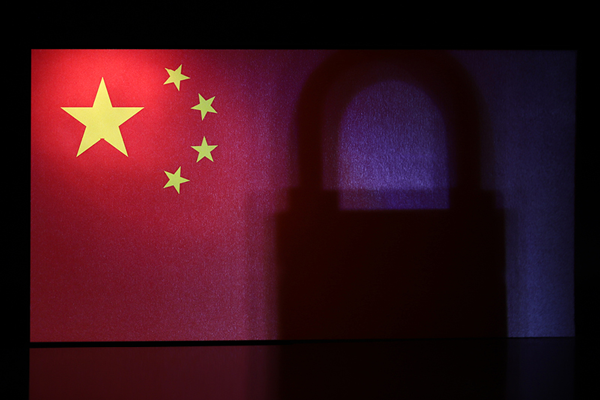
The revision of China’s anti-trust law reflects an attitude of regulatory authorities to crack down on the infringement of trade secrets and is an important measure reflecting China’s aim of strengthening intellectual property protection.
In 1993, the Anti-Unfair Competition Act “AUCA” first defined the concept of trade secrets, the forms of infringement and corresponding legal responsibilities. After 24 years, AUCA was first revised. On April 23 2019 with immediate effect, the Standing Committee of the National People's Congress revised AUCA again to further strengthen the protection of trade secrets.
The gap between revisions, only one and a half years apart, reflects the Chinese government's efforts and determination to continuously strengthen the protection of trade secrets. It is also an important part of the Chinese government active resolution of the Sino-US trade war.
The main focus of this revision was improvements to the definition of trade secrets, scope of infringers, cases of infringement of trade secrets, relief of rights holders, and the burden of proof.
MAIN CHANGES
First, the definition of trade secrets has been expanded from “technical information and business information” to “commercial information such as technical information and business information” meaning that trade secrets are no longer limited to technical information and business information.
“Business secrets are generally at the top of the corporate intellectual property food chain, often giving the company the greatest profit output. Trade secrets contain 70% of the value of corporate intellectual assets, so they are the 'crown jewels'.” said Zou Wen, Partner at AnJie Law Firm, citing data from Professor Zheng Youde on his article calling for the development of a special law on trade secret protection in China.
But what has not caught up yet is that the setup and systems for trade secret protection are still at a relatively early stage in China. At the legislative level, trade secret protection is mainly scattered amongst laws, regulations and judicial interpretations such as AUCA, contract law, labor contract law and criminal law. At the commercial level, there is still a great lack of awareness and experience in how to define, manage, protect and defend trade secrets.
Many companies will consciously carry out patent registrations, design protection, trademark registration, and even customary copyright registration, but the system of trade secret protection has been neglected said Zou.
Trade secrets actually cover a wide range of topics, both for technical information such as proprietary technologies that patent protection cannot cover, as well as for business information such as business plans, advertising strategies, customer lists, and internet operations. George Wang of Jun He law firm pointed out that “Intellectual property rights include commercial secrets in addition to well-known patents, trademarks and copyrights. The protection of intellectual property rights also includes the protection of trade secrets.”
Judging from the three constituent elements of China's definition of trade secrets, one of them emphasizes “having commercial value.” This is different from the United States where the US trade secret legislation also provides full protection for “negative information”, that is, information that does not directly make one’s production more efficient, but can reduce research expenses and avoiding detours.
“Have companies adopted sufficient confidentiality measures for positive and negative information on trade secrets, and have they conducted confidential awareness training for employees? From previous cases of trade secret disputes, the highest proportion of cases arise from internal employees’ violation of business protocols, confidentiality agreements or violation of the rights holder’s requirements for preserving trade secrets, disclosures, use or allowing others to use the trade secrets they have,” Wang said.
In this regard, AUCA amends Article 9.4.2, to extend the definition of an infringer to include "other natural persons, legal persons and unincorporated organizations other than the operator". This means that if the internal employees leave the company and take business secrets away, the company can pursue the legal liability of the employees in accordance with the provisions of AUCA.
At the same time, Article 9.4.1 also added a case of infringement, extending the violation of trade secrets from direct behavior to indirect behavior. Because when a department is suspected of infringing corporate crimes, the punishment often falls on the technical personnel who directly commit the infringement, but the company's senior management often play a role in the decision, approval, inspiration and connivance of this process. After the amendment, instigating, tempting and helping others to violate the commercial secrets of rights holders will also be subject to legal sanctions.
Article 9 of the AUCA amendment also changed the "violation of an agreement" to "violation of confidentiality obligations", thereby strengthening the confidentiality responsibility of internal employees, partners and other personnel who know and have control of trade secrets. This was needed as regards to "confidential agreements" before the revision, the regulations were too narrow, and the infringement was limited to legally entered into "confidential agreements"; and once the "confidential agreement" was not signed, it was difficult to prove a party's infringement.
This is also a reason why cases involving trade secrets are difficult to prove, obtain convictions and compared to other cases, the rate of acquittal is relatively high. Standing beside other intellectual property rights, trade secrets are made of an opaque set of rights, have unclear boundaries to such rights, which remain unstable and have unique characteristics, which altogether add up to a fragile truth: once lost it is irrecoverable.
Despite this, trade secrets are still an important form of corporate protection of their technical and operational information. For companies, patents and trade secrets are indispensable. “Researched technologies that wants to obtain complete protection often relies partly on patents and partly on trade secrets,” said Zou. “There are advantages and disadvantages to both, patents trade public disclosure for protection, and the biggest drawback is the time limit to protection. After this period it will enter the general arena. The advantage of trade secret protection is that it can be owned indefinitely without time limit unless the technology itself is rendered obsolete; the drawback is of course vulnerability."
How is the boundary between the two divided? Zou pointed out that, in simple terms, anything easily reverse-engineered and whose technical features are easily seen in the finished products are suitable for patent protection, and vice versa.
In response to the biggest problem faced by enterprises in the dispute of trade secrets, AUCA has introduced Article 32, the transfer of burden of proof, as the best response to the difficulty of obtaining evidence. Article 32.1 states: "In the civil trial procedure for infringement of trade secrets, where the trade secret right holder provides prima facie evidence that it has taken confidential measures protecting the claimed trade secret and reasonably demonstrates alleged infringement of the protected trade secrets, the alleged infringer shall prove that the trade secret claimed by the right holder does not belong to the trade secrets stipulated in this Act."
In short, the right holder only needs to provide prima facie evidence to justify that the trade secret has been violated. But how do you understand the "reasonable demonstration"? Ma Yuanchao, a partner of Zhong Lun law firm, pointed out that the burden of proof of the right holder includes three aspects and the lack of any one aspect means the "reasonable indication" cannot be met. The three aspects are: proving the subject of the infringement; verifying the alleged infringer used specific illegitimate means of implementation; and proof that the two methods/information are identical or substantially identical.
In other words, if the right holder is allowed to exempt the evidence from any one or more of the above, it will lead to right holders arbitrarily bringing lawsuits, thereby unreasonably increasing the burden of proof and the cost of responding to the alleged infringer. This could easily lead to the so-called right holder using trade secret lawsuits to go fishing for competitors' trade secret information.
Ma further pointed out that "as a result, it is possible to shift trade secret cases from the difficulty for rights holder to defend their rights to the corresponding extreme of an abuse of litigation."
Looking at Article 32.2.2, once the right holder has evidence that the trade secret has been disclosed, used by the alleged infringer or at risk of being disclosed or used, the alleged infringer should prove that there is no infringement of trade secrets. Ma emphasized that “immediate infringement being a presumption of direct infringement is a major change in the 2019 law.”
Zou Wen believes that the “risk of disclosure and use” is the biggest highlight of the AUCA revision. This provision essentially gives the presiding judge greater discretion. From the violation of non-compete restrictions by employees in going to the competition, the sale of various terminal products involving trade secrets may be considered as evidence of “a risk of being disclosed and used”. “But what kind of proof can be achieved? The transfer of the burden of proof requires the judge to make a decision."
Another manifestation of the judge’s greater discretion is the Article 4.4 of the amendment to AUCA. “The actual loss suffered by the right holder due to the infringement and the infringer’s benefit from the infringement are difficult to determine. The court granted compensation to the right holder of less than 5 million RMB according to the severity of the infringement.” Before the amendment was compensation was limited to 3 million RMB, this action has undoubtedly increased the scope for relief for rights holders.
In Article 17.3, a punitive damages provision was also added for the first time: for malicious infringement of trade secrets, if the circumstances are serious, damages may be determined according to the loss of the right holder or the amount of the infringer’s profit to a factor of 1.5x.
"In the past, the liability for commercial secrets was restitutive compensation, only compensating the actual loss caused by the violation of the trade secrets by the rights holder. This punitive damages provision has increased the cost of infringing trade secrets and has a certain deterrent. In addition, in practice, the actual loss caused by the infringement of trade secrets (including the benefits obtained by the infringer due to infringement) is sometimes difficult to prove with corresponding evidence, which will make the claim of the right holder’s challenging difficult due to insufficient evidence without the support of the court. Now the court's discretion to compensate for the loss makes up for the aforementioned shortcomings and increase the potential relief for the rights holder. This should be in line with the discretionary compensation used in the other three sections of intellectual property rights." Wang Zhao said.
At present, the legal compensation limit for copyright infringement is 500,000 RMB, for trademark infringement is 3 million RMB, and the legal compensation limit for patent infringement is 1 million RMB. The statutory compensation limit for trade secret infringement has once again increased to 5 million RMB within a year and a half after the last revision to 3 million RMB. Ma Yuanchao believes that "instead of thinking that it is driven by domestic demand, it is better to see this as a result of the external pressure of Sino-US trade disputes."
STRENGTHENING PROTECTIONS
China's legislation on the protection of trade secrets has shifted from civil to criminal processes. Article 219 of the Criminal Code of 1997 first included the crime of infringement of trade secrets.
Criminal punishment of trade secrets infringement is an important means of protection. However,because trade secret infringements are concealed and infringements non-public, evidence collection, identification and trial of cases have always been difficult.
"The problem of obtaining evidence affects civil rights protection and criminal rights protection equally. There is also a special difficulty with criminal rights protections. It is difficult to prove that the rights holders lost more than RMB 500,000, which is the basic requirement of certain crimes." Zou Wen pointed out.
Unlike the United States, Chinese trade secret crimes have always been a “result” crime, that is, there is actual loss to the rights holder and the loss reaches RMB 500,000, at which point the public security organs can intervene. In the United States it is instead a behavioral offense, that is, the police can intervene when the secrets are stolen, which can effectively stop the expansion of fallout.
Limited by the strict provisions of the criminal law, and considering the long-term trial period of trade secret cases and the uncontrollable consequences of loss, Zou also suggested that enterprises can try more injunctions in trade secret litigation to quickly stop the expansion of the consequences of infringement. "I have always believed that trade secrets are the most suitable case for applying for an injunction. The Provisions of the Supreme People's Court on Several Issues Concerning the Use of Laws for the Examination of the Cases of the Protection of Intellectual Property Disputes, which was implemented on 1 January of this year, made a complete clarification of the situation and has provided good guiding significance."
At the legislative level, China’s special law on the protection of trade secrets has been more vocal in recent years. Since 2016, the United States and the European Union have also developed a more comprehensive special law on trade secret protection. Trade secrets are increasingly becoming an effective tool for competitive advantage and an important strategic resource for safeguarding economic security and national security.
"Strengthening the protection of trade secrets is also inseparable from the important work of the corporate level in the following four aspects: first, the establishment and improvement of the corporate trade secret management system; second, training corporate personnel to strengthen awareness of the protection of trade secrets; third, how best can companies upgrade the business secret management and protection measures on the technical level in the digital economy, where the theft of trade secrets is more concealed and convenient; fourth, how can companies strengthen the protection of their trade secrets while avoiding falling into the abyss of infringing on other’s trade secrets." Wang Zhao advised.
In previous cases, the main reason for the loss of a large number of trade secret dispute cases was attributed to the inadequacy of a company’s internal trade secret management. "Many companies will not sort out and define their trade secrets, there may be loopholes in management, or even no confidentiality measures at all. These will affect the subsequent rights protection and bring irreparable losses to the company." Zou Wen said frankly.
With the strengthening of intellectual property protection in China leading to a continuous improvement of the business environment, companies will undergo a process of recognizing, actioning and improving their protection of trade secrets. At present, many leading technology companies in China are already building a complete trade secret protection system and are constantly exploring new ways to deal with new complex trade secret protection and dispute issues. This is a very good development, all the lawyers interviewed generally said.
Zou finally pointed out that the revision of the law as a whole aims to strengthen the protection of trade secrets, but at the same time, the ambiguity of some regulations also gives judges great discretion - the judges establish precedence through the laws’ application, which then generate the guidelines to eliminate unclear obstacles. Over the next while this is likely to be the judicial environment for trade secret protections.
Zou suggested that companies should be cautiously optimistic. "If there are suitable cases, they should actively promote defining the rules and becoming industry benchmarking cases, which then promotes the improvement of the entire trade secret protection system."
保守商业秘密
《反法》的修订反映了监管层严厉打击侵犯商业秘密行为的态度,也是中国强化知识产权保护的重要举措。
1993年,《反不正当竞争法》(《反法》)首次明确商业秘密的概念、商业秘密的侵权形式及相应的法律责任。时隔24年,《反法》首次修订。2019年4月23日,全国人大常委会对《反法》再次修订,进一步强化对商业秘密的保护,并自公布之日起施行。
距离上次修订,时隔仅一年半,体现了中国政府持续加强商业秘密保护的努力和决心,也是中国政府积极解决中美贸易战的一项重要措施。
本次修订的最大亮点是在商业秘密内涵、侵权人主体范围、侵犯商业秘密的情形、对权利人的救济力度、举证责任等方面进行了完善。
主要变化
首先,将商业秘密定义中的“技术信息和经营信息”修改为“技术信息、经营信息等商业信息”,即商业秘密不再仅限于技术信息和经营信息。
“商业秘密一般处于企业知识产权食物链的顶层,往往给企业带来最大的利润产出。商业秘密包含企业知识资产价值的70%,因此是‘皇冠上的明珠’。” 安杰律师事务所合伙人邹雯律师援引郑友德教授关于呼吁我国制定商业秘密保护专门法一篇文章里的数据,来说明商业秘密的重要性。
但不相匹配的是,商业秘密保护的体系和制度在中国还处于较初级的阶段。立法层面,商业秘密保护主要散见于《反法》、《合同法》、《劳动合同法》、《刑法》等法律法规和司法解释中;企业层面,如何界定、管理、保护、捍卫商业秘密的意识和经验仍有很大欠缺。
很多企业会有意识地进行专利挖掘和布局、商标布局,甚至会惯例式地进行著作权登记,但对于商业秘密保护的体系一直疏于建立和管理,邹雯律师谈到。
商业秘密其实涉及很广泛的主题,既适用于专利保护无法涉及的专有技术等技术信息,也可实现对商业计划、广告策略、客户名单以及网络经营诀窍等商业信息。君合律师事务所王钊律师指出,“知识产权除了大家熟知的专利、商标、著作权外,也包括商业秘密,知识产权的保护范畴也包括对商业秘密的保护。”
从我国规定商业秘密的三个构成要件来看,其中一个即强调“具有商业价值”,这点与美国不同,美国的商业秘密法对消极信息也给予充分保护,即指那些不直接使所有人的生产更有效率但可减少所有人的科研费用等支出、避免走弯路的信息。
“企业是否对商业秘密的积极信息与消极信息均采取了充分的保密措施、是否对员工进行了保密意识培训?我们从以往商业秘密纠纷案来看,发案比例最高的还是内部员工违反保守商业秘密的约定或违反权利人有关保守商业秘密的要求,披露、使用或者允许他人使用所掌握的商业秘密的情形。”王钊律师指出。
对此,《反法》修改第9条第4款第二段,将侵权人主体拓展到“经营者以外的其他自然人、法人和非法人组织”。意味着,内部员工离职时违反规定将企业商业秘密带走,企业就能按照《反法》的规定追究员工的法律责任。
同时,第9条第4款第一段也新增了侵权行为的情形,将侵犯商业秘密行为从直接行为拓展到间接行为。因为单位涉嫌侵犯商业罪的,通常都会处罚直接实施侵权行为的技术人员,但公司高管人员在此过程中常起到决定、批准、授意、纵容、指挥等作用。修改后,教唆、引诱、帮助他们侵犯权利人的商业秘密也会受到法律制裁。
《反法》修改第9条也进一步将“违反约定”改为“违反保密义务”,以此加强内部员工、合作伙伴等知晓和掌握商业秘密人员的保密责任,因修改前的“保密约定”规定得过于狭窄,将侵权行为仅限于违法所签订的“保密协议”;一旦未签订“保密协议”,就很难证明当事人侵权。
这也是导致商业秘密案件存在举证难、定罪难,相较其他案件会无罪判决率相对较高的一个原因。与知识产权其他权利相比,商业秘密本身具备的权利内容不清晰、权利边界不清晰、权利状态不稳定、权利独占相对性等特点,决定了其脆弱性的一面:一旦丧失永远丧失。
尽管如此,商业秘密仍是企业保护其技术信息和经营信息的重要形式。对于企业来说,专利与商业秘密各司其职,都是不可或缺的。“一个研发出来的技术,想要获得完整的保护,往往部分依赖专利、部分依赖商业秘密,”邹雯律师谈到,“二者各有利弊。专利属于公开换保护,最大的弊端在于有保护期的限制,过了保护期就会进入共有领域;商业秘密保护的好处在于可以持续地拥有,没有期限限制,除非技术本身被淘汰,弊端当然就是脆弱性。”
二者的界限如何划分?邹雯律师指出,简单来说,容易被反向工程、容易从终端产品看出技术特征的,适合用专利保护,反之适合用商业秘密保护。
针对企业深陷商业秘密纠纷面对的最大难题,此次新增了第32条——举证责任的迁移,即是对取证难问题的最好回应。第32条第1款规定:“在侵犯商业秘密的民事审判程序中,商业秘密权利人提供初步证据,证明其已经对所主张的商业秘密采取保密措施,且合理表明商业秘密被侵犯,涉嫌侵权人应当证明权利人所主张的商业秘密不属于本法规定的商业秘密。”
简而言之,权利人只需提供初步证据合理表明商业秘密被侵犯即可。但如何理解“合理表明”?中伦律师事务所合伙人马远超律师指出,权利人的举证责任包含三方面内容,缺少任何一项都无法符合“合理表明”,三方面内容分别是:证明侵权行为实施主体;证明涉嫌侵权人实施的具体不正当手段;证明两者信息具有同一性或者实质相同。
换言之,如果允许权利人免予举证上述任一项或者多项举证内容,都会导致权利人捕风捉影地任意提起诉讼,从而无端加重涉嫌侵权人一方的举证责任与应诉成本,也容易导致所谓权利人利用商业秘密诉讼“刺探”竞争对手的商业秘密信息。
马远超律师进而指出,“如此一来,有可能使得商业秘密案件从权利人维权难,走向权利人滥用诉讼的另一个极端。”
再看第32条第2款第二项规定,一旦权利人有证据表明商业秘密已经被涉嫌侵权人披露、使用或者有被披露、使用的风险,涉嫌侵权人应当证明其不存在侵犯商业秘密的行为。马远超律师在此强调,“将即发性侵权行为直接推定为存在直接侵权行为,是2019年修法的一个重大变化。”
邹雯律师也认为,“有被披露、使用的风险”这一规定是本次反法修改最大的亮点,这一规定实质上也赋予了法官较大的自由裁量权。从员工违反竞业限制去到竞争对手处入职到各种涉及商业秘密的终端产品上市宣传,都可能被认为是“有被披露、使用的风险”的证据,“但是什么样的证明程度可以实现举证责任的转移,则需要法官具体把握。”
法官被赋予较大自由裁量权的另一处体现是《反法》修改的第17条第4款,“权利人因被侵权受到的实际损失、侵权人因侵权获得的利益难以确定的,由人民法院根据侵权行为的情节判决给予权利人500万元以下的赔偿。”修改前是300万元以下,此动作无疑加大了对权利人的救济力度。
在第17条第3款中,还首次增加了惩罚性赔偿规定:针对恶意实施侵犯商业秘密行为,情节严重的,可以在按照权利人损失或者侵权人获利数额的一倍以上五倍以下确定赔偿数额。
“以往对于商业秘密的赔偿责任是填补性赔偿,只赔偿权利人因商业秘密被侵犯所导致的实际损失,此次规定惩罚性赔偿,增加了侵犯商业秘密的违法成本,具有一定的威慑力。此外,由于在实践中,商业秘密被侵犯所导致的实际损失(包括侵权人因侵权获得的利益)有时很难有相应的证据予以证明,该情形会令权利人的赔偿请求因为证据不足而得不到法院的支持,此次赋予法院对赔偿损失的酌定权,就是弥补前述缺陷,增加对权利人的救济,这应该是借鉴了知识产权另三部法里的酌定权赔偿。”王钊律师谈到。
目前,版权侵权的法定赔偿上限为50万元,商标侵权的法定赔偿上限为300万元,专利侵权的法定赔偿上限为100万元。对于商业秘密侵权的法定赔偿上限在距离上一次修订为300万元之后的一年半内再次提升到500万元,马远超律师认为,“与其理解为是受内需所驱、不如看成是中美贸易争端外压的作用结果。”
加强保护
我国关于商业秘密保护的立法经历了一个从民事先行到刑民并举的过程。1997年《刑法》第219条第一次将侵犯商业秘密罪写进去。
对侵犯商业秘密行为进行刑事处罚是保护商业秘密的重要手段,但因为商业秘密侵权行为具有隐秘性、侵犯对象具有非公示性,关于侵权行为的取证、认定和审理一直存在着较大难度。
“取证难问题是民事维权和刑事维权共通的,刑事维权还有一个特殊难点就是难以证明权利人损失超过人民币50万元这一定罪量刑的基础要件。”邹雯律师指出。
与美国不同,中国商业秘密犯罪一直是结果犯,也就是必须产生权利人实际损失且损失达到50万,公安机关才能介入。美国是行为犯,即窃取行为发生了警察即可介入,这样能够有效制止损害结果的扩大。
受限于刑法的严格规定,以及考虑到商业秘密案件审判周期长、损害后果不可控的现状,邹雯律师还建议企业可以在商业秘密诉讼中多尝试禁令申请,以快速制止侵权损害后果的扩大。“,我一直认为商业秘密是最适合申请禁令的案件。今年1月1日开始施行的《最高人民法院关于审查知识产权纠纷行为保全案件使用法律若干问题的规定》对于禁令问题做了完整的厘清,有很好的指导意义。”
立法层面,近些年就中国出台商业秘密保护专门法的呼声不绝于耳。2016年以来,美国和欧盟也相继制定了更加完善的商业秘密保护专门法。商业秘密日益成为竞争优势的有效工具之一、也是维护国家经济安全和国家安全的重要战略资源。
“强化商业秘密的保护,也离不开企业层面在以下四个方面的重要工作:第一,企业商业秘密管理制度的建立与完善;第二,培训企业人员强化商业秘密的保护意识;第三,数字经济下,商业秘密的窃取更加隐蔽和便捷,企业如何在技术层面上升级商业秘密管理工作水平和保护措施;第四,企业如何在加强商业秘密保护的同时,避免陷入侵犯他人商业秘密的深渊。”王钊律师给出建议。
过往案例中,大量商业秘密纠纷案件败诉的主因都归结为企业内部商业秘密管理不到位。“很多企业不会梳理、固定商业秘密,管理中存在漏洞、甚至根本没采取保密措施,这些都会影响到后续的维权,给企业带来无法弥补的损失。”邹律师坦言。
随着我国对知识产权保护的大力加强、对营商环境的持续改善,企业在商业秘密保护问题上会有一个认知、采取行动、不断完善的演变过程。目前,中国很多技术领先企业已在搭建完善的商业秘密保护体系并对如何应对新型复杂商业秘密保护和纠纷课题不断进行新的探索,这是一个很好的现象,受访律师们普遍表示。
邹雯律师最后指出,此次修法整体而言是在强化商业秘密的保护,但同时一些规定的模糊性也给了法官很大的自由裁量权——法官通过适用法律来建立裁判规则,进而产生指引的作用,以消除法律规定不明确的障碍,可能是未来一段时间商业秘密保护司法层面会呈现出的常态。
邹雯律师对此建议企业应当保持谨慎乐观,“如果有合适的案件,应当积极推动、以明确规则,成为行业标杆式案件,进而推动整个商业秘密保护制度的完善。”
To contact the editorial team, please email ALBEditor@thomsonreuters.com.



